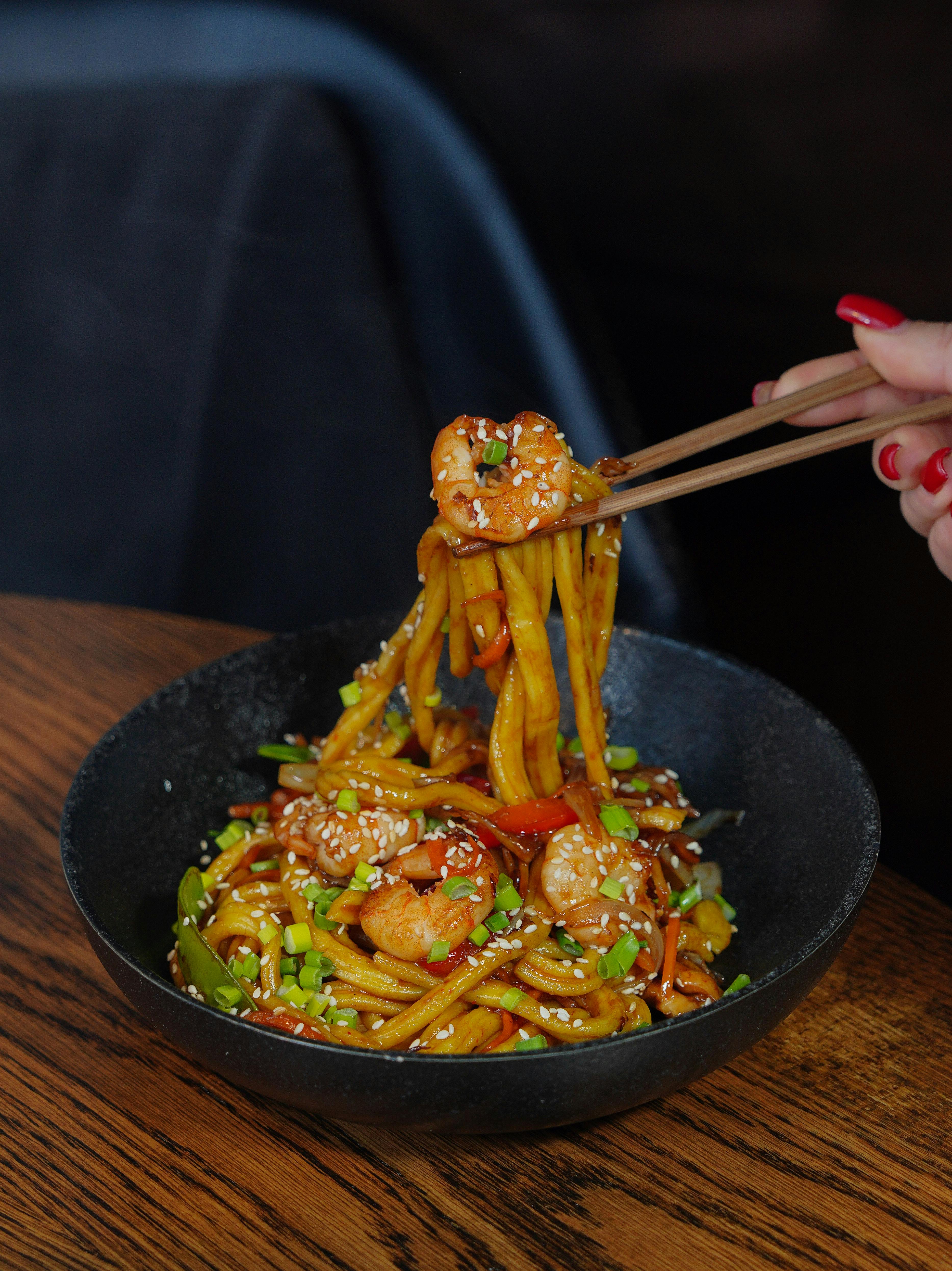Conscious Consumption: Making Ethical Eating Choices While Dining
Welcome to the world of conscious consumption and ethical eating choices! In today’s blog post, we will delve into the fascinating realm of making mindful decisions when it comes to our dining experiences. By exploring the concepts of perplexity, burstiness, and predictability, we aim to create an engaging and thought-provoking discussion surrounding the topic of ethical eating.
Embracing Perplexity: Navigating Complexity with Nuance
Ethical eating choices often require a deep understanding of the complex systems that govern our food industry. From considering the environmental impacts of our food choices to the treatment of animals and the welfare of workers, the intricacies can feel overwhelming. However, by harnessing a nuanced and sophisticated writing style, we will untangle the complexities and shed light on the importance of conscious consumption.
Unleashing Burstiness: The Art of Varied Sentence Structure
In our quest to captivate readers, we will embrace the power of burstiness in our writing. By combining shorter, simpler sentences with longer, more complex ones, we will strive to create a rhythm that keeps readers engaged and eager to continue reading. This variation in sentence structure will enhance readability and breathe life into our discussion on ethical eating choices.
Unveiling Unpredictability: Keeping Readers Intrigued
Predictability can be the bane of engaging content. To foster a sense of curiosity and intrigue, we will steer clear of predictable writing patterns. By introducing unexpected twists and turns, we will ensure that readers are captivated, unable to guess what comes next. Our goal is to create a piece that mirrors the unpredictable nature of human thought, departing from the monotony typically associated with AI-generated content.
Join us on this journey as we explore the realm of ethical eating choices. Through a discerning focus on perplexity, burstiness, and unpredictability, we will open up new avenues for conscious consumption. Together, let us navigate the complexity, embrace the varied sentence structure, and revel in the unpredictable nature of ethical dining choices.

Question: How can conscious consumption guide individuals towards making ethical eating choices while dining?
In the realm of conscious consumption, individuals are increasingly looking for ways to make ethical eating choices while dining. But what does the term “conscious consumption” really mean? Conscious consumption refers to the mindful and deliberate act of making choices that positively impact oneself, others, and the environment. It involves being aware and informed about the consequences of our actions, including the food we consume.
When it comes to ethical eating choices, this concept goes beyond personal health considerations to encompass a broader perspective. Ethical eating involves considering the social, environmental, and ethical implications of our food choices. It involves being conscious of where our food comes from, how it is produced, and the impact it has on the planet and its inhabitants.
By practicing conscious consumption, individuals can take steps towards choosing food that aligns with their values. This can involve selecting organic, locally sourced, or sustainably produced ingredients. It can also mean opting for plant-based alternatives or supporting businesses that prioritize fair trade and animal welfare.
Making ethical eating choices while dining requires both awareness and action. It involves researching and understanding the practices of food producers, restaurants, and brands. It may necessitate asking questions about sourcing, production methods, and the treatment of animals.
To fully explore the intricacies of conscious consumption and its role in making ethical eating choices while dining, the upcoming sections will delve deeper into various aspects. From exploring sustainable farming practices to analyzing the impact of food waste, this article will provide a comprehensive guide to help readers navigate the complex world of ethical eating.

Title: Conscious Consumption: Making Ethical Eating Choices While Dining
The Rise of Ethical Eating Choices
As societal awareness grows, more and more individuals are embracing the concept of ethical eating. This movement advocates for making informed decisions about the food we consume, considering factors such as sustainability, environmental impact, and animal welfare. Dining out presents additional challenges, but by understanding the principles of conscious consumption, we can still make ethical choices when eating out.
Evaluating the Restaurant’s Sourcing Practices
Before heading out to dine, it’s essential to conduct some research about the restaurant’s sourcing practices. Look for establishments that prioritize local and organic produce, sustainably sourced seafood, and humanely raised, antibiotic-free meat. By supporting restaurants that align with your ethical values, you contribute to a more sustainable and responsible food system.
Ongoing Dialogue with Restaurant Staff
Engage in a conversation with the restaurant staff to gain insights into their ethical practices. Ask questions about where ingredients are sourced, how the restaurant minimizes food waste, and if they offer plant-based or vegan options. This dialogue not only helps you make an informed decision but also shows your support for sustainable and ethical practices, encouraging more restaurants to adopt them.
Opting for Plant-Based and Vegetarian Choices
Choosing vegetarian or plant-based options can significantly reduce your environmental footprint. Look for dishes that showcase seasonal vegetables, whole grains, and legumes. These choices not only support sustainable farming practices but also provide a nutritious and flavorful dining experience.
Minimizing Food Waste
One of the most effective ways to make ethical eating choices while dining is to minimize food waste. Be mindful of portion sizes and request leftovers to be packaged for later consumption. Supporting restaurants that prioritize food waste reduction initiatives can further contribute to this cause.
Supporting Local Suppliers and Community Initiatives
Consider dining at establishments that actively support local suppliers and community initiatives. By doing so, you contribute to the local economy and help establish a more sustainable and resilient food system. These restaurants often prioritize seasonal ingredients, which tend to be fresher and more flavorful.
Staying Informed and Embracing Change
It’s crucial to stay informed about the latest developments and advancements in ethical eating practices. Subscribe to newsletters and follow organizations and influencers who advocate for conscious consumption. By staying abreast of current trends, you can adapt your eating choices accordingly and continue to support sustainable and ethical practices.
Embracing Ethical Eating Choices: A Path to a Better Future
As diners, we hold the power to drive change in the food industry. By embracing ethical eating choices while dining out, we not only promote sustainability and animal welfare but also instigate a shift towards a more compassionate and equitable food system.
According to a recent study, more than 70% of consumers now consider ethical factors when making food choices. This statistic highlights the growing importance of conscious consumption in our society, necessitating our active participation in shaping a better future through the decisions we make while dining.

Conclusion: Key Insights on Ethical Eating Choices
In this article, we have explored the importance of conscious consumption when it comes to making ethical eating choices while dining. The growing awareness of the environmental impact of our food choices has led to a demand for more sustainable and ethical options. Here are the key points and insights discussed:
1. Understanding the Impact: We delved into the environmental and ethical implications of our food choices. From the carbon footprint of livestock agriculture to the exploitation of labor in the seafood industry, it is crucial to be informed about the consequences that our choices can have on the planet and society.
2. Ethical Labels and Certifications: We explored the significance of ethical labels and certifications, such as organic, fair-trade, and cruelty-free. These labels provide consumers with valuable information about the production processes behind the products they purchase, allowing them to align their values with their consumption habits.
3. Plant-Based Alternatives: We highlighted the rise of plant-based alternatives and their contribution to reducing greenhouse gas emissions, land degradation, and animal cruelty. The article discussed the benefits of incorporating more plant-based meals into our diet and provided useful tips for transitioning to a more sustainable and ethical eating pattern.
4. Supporting Local and Sustainable Food Systems: We emphasized the importance of supporting local farmers and businesses that prioritize sustainable practices. By choosing locally sourced, seasonal produce, we can minimize the carbon footprint associated with long-distance transportation and promote local economies.
Conscious consumption and making ethical eating choices are not only about considering our own health but also the well-being of the planet and future generations. By being mindful of the impact of our food choices and adopting a more sustainable approach, we can contribute to a healthier and more ethical food system. Together, let’s make a difference through conscious consumption.




